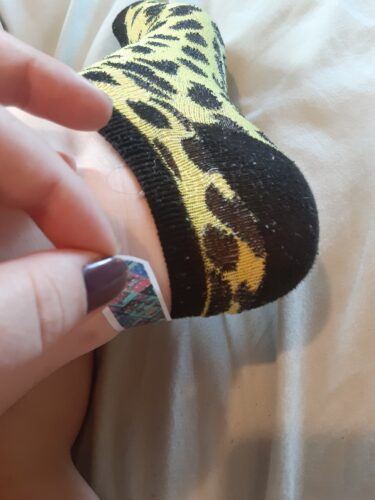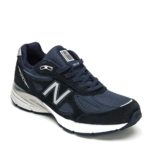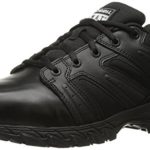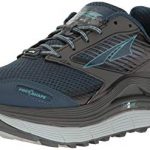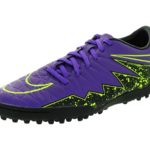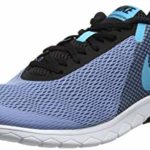Wearing shoes that fit properly is the best defense against shoe bite. However, that isn’t always an option when you’re trying to break a shoe in or if you’re in between sizes. These tips on how to prevent shoe bite will stop blisters before they happen.
Reduce Friction
If you are breaking in new shoes, one option is to protect the areas that get irritated. By putting a stop to the rubbing, you can prevent blisters from being formed.
Double-Up On Socks
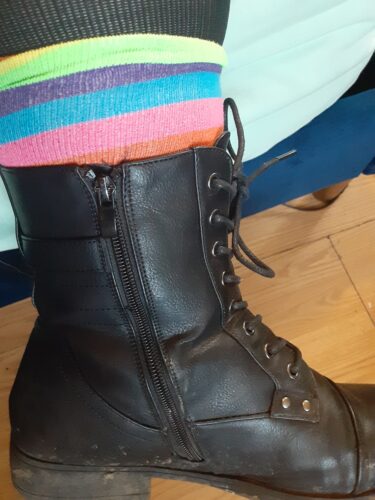
With a thicker layer of socks, you’re making it less likely that you experience rubbing from the shoes. Sometimes, I even wear more than one pair of socks when I’m breaking in boots especially. Socks are nice because they prevent rubbing from all ankles. Plus, wearing extra socks helps stretch the shoe out a little more.
Use Toe Protectors
If you experience shoe bite near your toes, then toe protectors or toe caps are a good choice. Toe caps cushion the toe area so that you don’t have excess rubbing there.
Apply Paper Tape or a Band-Aid
Something else that you can try is covering the problem spots with paper tape or a band-aid. Even if you don’t have a blister already, this provides cushioning to prevent shoe bite. According to a 2016 study, marathon runners commonly use this method to stop rubbing from their shoes when they are running. It’s also a lot less bulky than some of the other methods mentioned.
Use Petroleum Jelly
If covering the area isn’t an option, some shoe bite problem spots might benefit from using petroleum jelly. Petroleum jelly helps the shoe glide against the skin and provides an extra layer of protection. Just apply it to the spots where the shoe is rubbing most.
Wear Insoles
Finally, if you experience rubbing on the bottom of your shoe, you can try adding insoles. Insoles provide a thick layer of cushioning between your feet and the bottom of your shoes. They can also help prevent rubbing if they are caused by your shoe being too thin.
Adjust the Fit of Your Shoes
Friction between your skin and your shoes generally happens when your shoe doesn’t fit how it is supposed to. This might happen because the shoe is just a little too small (or big). It can also happen when your shoes are new, and the materials are still stiff. The stiff materials are more likely to cause shoe bite. Here are some tips for adjusting how your shoes fit.
Break In New Shoes at Home
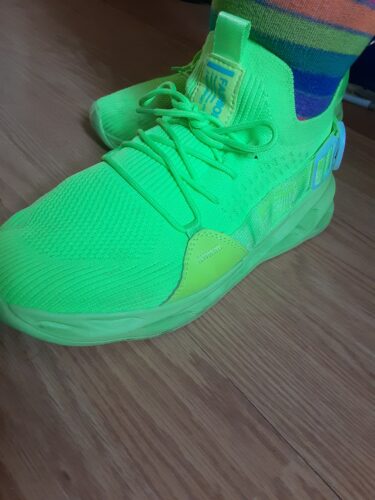
One of the most common reasons people get blisters is because they’re wearing shoes for the first time. New shoes are a lot stiffer than those that have been worn in. Instead of wearing new shoes for hours at a time, break them in an hour or two a day at home first. By wearing them, you are giving them a chance to stretch and soften, so they’re less likely to cause shoe bite.
Stretch the Shoes
Another option is to give your feet a little more room in the shoes. Using a professional shoe stretcher can help you gently stretch shoes. Usually, you’ll put the plastic or wooden shoe stretcher in and then let it sit overnight to work its magic.
If you don’t have a shoe stretcher, then warming the shoes can also help. Put on an extra-thick pair of socks and use a blow dryer to heat up the areas that are tight for about 30 seconds. Then, you’re going to walk around in them to help each shoe stretch.
Use Water to Mold Sandals
If you have a pair of strappy sandals that need to be stretched, start by putting them on your feet and dunking them in a bucket of water. Then, you’re going to walk around in them for a few hours to let the material naturally stretch while it’s wet. Be sure to do a test area if you aren’t sure if your shoes can tolerate the water.
Oil Leather Shoes
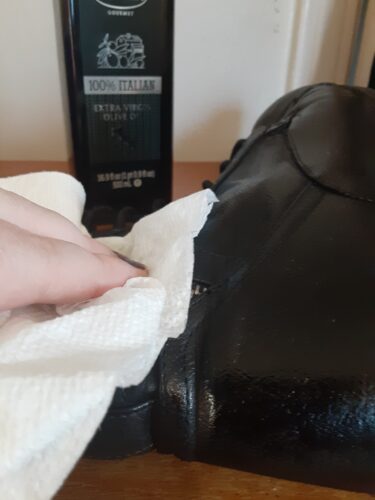
Massaging oil into the leather helps soften it, making it less abrasive and preventing shoe bite. You can use coconut oil, mink oil, olive oil, or another type. Massage it in and give the oil several days to set in. The leather should be much softer after that. If you’re worried about the oil damaging the leather or discoloring it, you can also use a leather conditioner to get the same result.
You don’t need a lot of oil to get this done. Just add a little to a cotton ball, cloth, or paper towel and rub it into the boot using small circles.
FAQs – How to Prevent Shoe Bite
What causes shoe bite?
Shoe bite, or blisters, are caused by friction from your shoe rubbing against your foot. One of the most common places to get shoe bite is on the back of the ankle, near the heel. However, you can also get shoe bite around your ankle, near your toes, on the sole of your foot, or anywhere else that your shoe is rubbing against your skin too much.
What’s the best way to treat blisters?
The first thing that you should do when treating blisters is to avoid the shoes that gave you shoe bite in the first place. Avoid any additional rubbing so blisters don’t get worse. Then, apply something that targets inflammation and promotes healing. While you could use a triple antibiotic ointment, something like honey, aloe vera gel, or even petroleum jelly will also work. You can also apply a band-aid if you are putting the shoe bite under a pair of socks to prevent sticking and further irritation.
How long does it take to break in new shoes?
The amount of time that it takes to fully break in new shoes varies depending on how often you wear the shoes and how soft (or stiff) the materials of the shoe are. While you can break new shoes in a little in just a few days, it can take as long as 3-4 weeks for them to be fully comfortable. To avoid shoe bite during this time, try breaking in them by wearing them a little bit at a time, rather than starting with full-day wear right away.

Samantha is a part-time writer and stay-at-home mom of two boys (and three pets). With all the outdoor activities the family participates in and two growing boys, shoes are something she’s very familiar with.
